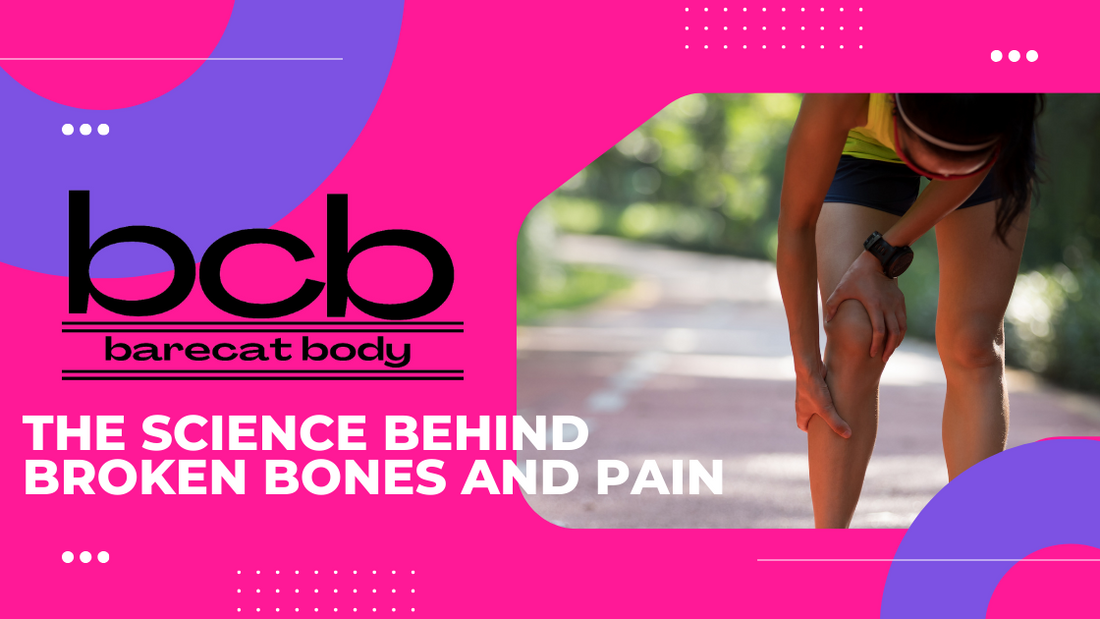
The Science Behind Broken Bones and Pain: How Oral Pain Relievers Bring Relief
Share
Broken bones are not only physically distressing but also notorious for causing intense pain. Understanding the mechanics behind this pain and how oral pain relievers provide relief can shed light on the complex interplay between our bodies and medications. Let's delve into how broken bones maximize pain and the role of oral pain relievers in mitigating this discomfort.
The Pain Amplification of Broken Bones:
When a bone breaks, whether due to trauma or stress, a cascade of physiological events is triggered within the body. This sequence is responsible for the intense pain associated with broken bones.
-
Inflammation: The body responds to the fracture by initiating an inflammatory response. This involves the release of inflammatory chemicals, such as prostaglandins, at the site of injury. These chemicals sensitize nerve endings in the surrounding tissues, leading to heightened pain perception.
-
Nerve Activation: Broken bones disrupt the normal alignment of bone fragments, causing them to rub against each other or press against nearby tissues. This mechanical irritation activates pain receptors in the affected area, sending pain signals to the brain.
-
Swelling: Swelling is a common response to injury. As damaged tissues release fluids and immune cells rush to the site, pressure builds up, exacerbating the pain by compressing nerves and blood vessels.
-
Chemical Messengers: The body releases neurotransmitters, such as substance P, which transmit pain signals from the injury site to the brain. This amplifies the perception of pain and contributes to the overall discomfort.
-
Muscle Spasms: The body's protective mechanism often involves muscle spasms around the injured area. These spasms, while meant to stabilize the injury, can further intensify pain due to muscle tension.
Oral Pain Relievers: How They Work to Alleviate Pain:
Oral pain relievers, such as non-steroidal anti-inflammatory drugs (NSAIDs) and acetaminophen, play a critical role in managing pain caused by broken bones. They provide relief by targeting the mechanisms that amplify pain, helping individuals regain comfort and mobility.
-
Anti-Inflammatory Action: NSAIDs, like ibuprofen, inhibit the production of prostaglandins, the inflammatory chemicals responsible for sensitizing nerve endings. By reducing inflammation, NSAIDs lower pain sensitivity and provide relief from the discomfort associated with broken bones.
-
Pain Signal Interception: Both NSAIDs and acetaminophen work on pain perception in the brain. NSAIDs interfere with the transmission of pain signals by blocking certain enzymes involved in the production of pain mediators. Acetaminophen, though not as effective as NSAIDs in reducing inflammation, affects the brain's pain centers, reducing the perception of pain.
-
Temperature Regulation: Acetaminophen, in addition to its pain-relieving effects, influences the brain's temperature-regulating center, leading to a reduction in fever. This can be particularly beneficial when fractures cause localized inflammation and fever.
-
Muscle Relaxation: Some oral pain relievers, especially muscle relaxants, can alleviate muscle spasms that often accompany broken bones. By reducing muscle tension, these medications contribute to overall pain relief and enhance comfort.
Finding the Right Balance:
While oral pain relievers offer significant relief, it's important to strike a balance. Overuse or misuse of these medications can lead to adverse effects. NSAIDs, for instance, can cause gastrointestinal irritation or bleeding when used excessively. Acetaminophen, when taken beyond recommended doses, can harm the liver. Consulting a healthcare professional is crucial for determining the appropriate dosage and duration of pain relievers.
Additionally, oral pain relievers address the symptoms of pain but don't replace the need for proper medical treatment for broken bones. Seeking medical attention, such as setting fractures, immobilization, and physical therapy, remains essential for proper healing.
Lastly, broken bones evoke intense pain through a complex interplay of inflammation, nerve activation, swelling, chemical messengers, and muscle spasms. This pain is a result of the body's protective response to injury. Oral pain relievers, such as NSAIDs and acetaminophen, play a vital role in managing this pain. By targeting inflammation, intercepting pain signals, and promoting muscle relaxation, these medications provide relief and enhance comfort. However, it's essential to use pain relievers responsibly and in consultation with healthcare professionals to avoid potential risks. Ultimately, the combination of medical intervention, pain management strategies, and time plays a crucial role in healing broken bones and minimizing the associated pain.
